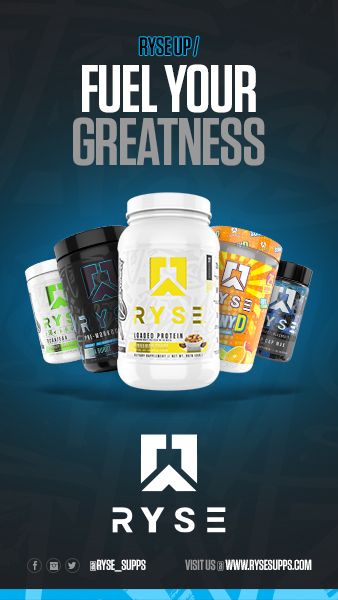Train smart, eat smart, get healthy amounts of sleep and more than likely your (you fill in the blank) ________ level will improve.
There is a lot of science, research and practical experience that goes into designing training programs that can produce world class results. Bottom line if you train smart, eat smart and sleep right; you are going to greatly improve your chances of having success….and that applies to a lot of aspects of our professional and personal lives as well, not just with training.
To improve, we need adaptations to occur and we need to understand how the adaptation was created. To get these results, a general understanding of how your body responds to stress/stimulus/work is necessary so you can improve your training results.
What Is Supercompensation?
Training is simply applying stress (or work) to the body. The body then recovers and adapts to that stress. In training, the adaptation response that all individuals pursue is called supercompensation. Strength and size occur after you recover and adapt from a training session, not during the actual workout. Once the body recovers and adapts to stress, then you manipulate training variables to change the stress to the body so you get further adaptation to occur.
- Applying stress to the body
- Immediate decrease in performance due to fatigue (from the applied stress)
- Recovery
- Performance returns to the training baseline of original stress application
- Supercompensation Phase. Adaptation from the stress occurs and pushes above the baseline.
Supercompensation Example
Let’s simplify this in an example: Let’s use a goal of lower body hypertrophy (increase muscle fiber size). The simple method to promote overreaching is to build the volume week-by-week. Let’s use a short four-week training cycle called a “microcycle”. You will perform Back Squats M/W/F for a total of 12 training sessions. Leave the intensity consistent during the microcycle so there aren’t multiple variables adjusting (for simplicity). If the goal is hypertrophy have your intensity around 70% of 1 RM.[/vc_column_text][/vc_column_inner][/vc_row_inner][vc_column_text css=”.vc_custom_1509573919478{padding-bottom: 20px !important;padding-left: 40px !important;}”]Week One – 2 x 10 Total Reps = 20/workout, 60/week
Week Two – 3 x 10 Total Reps = 30/workout, 90/week
Week Three – 4 x 10 Total Reps = 40/workout, 120/week
Week Four – 5 x 10 Total Reps = 50/workout, 150/week[/vc_column_text][vc_column_text css=”.vc_custom_1509573941518{padding-bottom: 20px !important;}”]You are forcing your muscle fibers to adapt to the increase in workload, in short time periods, this increase in workload will achieve “overreaching”. Provided you give yourself 48-72 hours between workouts, to allow your muscles to recover, adapt and grow. In the example above, if you are new to squatting this is WAY too much volume for you. This volume load would be directed toward an experienced lifter who has spent a good amount of time in the squat rack; performing SQUATS, not barbell bicep curls (that’s a rant I’ll possibly cover in another article…)
Eventually, there is a point where your body can’t take additional work. According to Siff, (1) “If subsequent loading is imposed too soon during the recovery stage, then supercompensation fails to occur and performance continues to decrease.”
Overtraining
Blue Line – To easy of a workout, not providing enough stimulus/stress to the body. Too small of a curve on the downward slope, so not enough room for adaptation to occur. “Undertraining” occurs as there is little to no improvement.[/vc_column_text][/vc_column_inner][/vc_row_inner][vc_column_text css=”.vc_custom_1509574135587{padding-bottom: 20px !important;}”]Green Line – Optimal workout, perfect amount of stimulus/stress to the body, adaptation occurs and rises above previous baseline
Pink Line – To hard of a workout, too much stimulus/stress applied to the body. Extreme soreness possibly occurs, which delays your recovery, adaptation is slower causing the upward slope to flatten out, thus not achieving any improvements.
Ideal Training Results
[/vc_column_text][vc_row_inner equal_height=”yes” content_placement=”middle” column_margin=”default” text_align=”left”][vc_column_inner column_padding=”no-extra-padding” column_padding_position=”all” background_color_opacity=”1″ width=”1/2″ column_border_width=”none” column_border_style=”solid”][vc_column_text]Graph III shows the ideal training results when a supercompensation rebound occurs. This is the holy grail of program design. This causes your previous baseline to elevate creating a new baseline for corresponding workouts. If all the variables are manipulated correctly and the proper ratio of work to recovery is achieved, the result is a continually rising curve pointed toward higher-level performance.Train smart, eat according to your goals, let adaptation occur and your muscle fibers will grow like weeds.
Until next time, stay strong.[/vc_column_text][/vc_column_inner][vc_column_inner column_padding=”no-extra-padding” column_padding_position=”all” background_color_opacity=”1″ width=”1/2″ column_border_width=”none” column_border_style=”solid”][image_with_animation image_url=”3377″ alignment=”center” animation=”Fade In” box_shadow=”none” max_width=”100%”][/vc_column_inner][/vc_row_inner][vc_column_text]References
1 Verkhoshansky, Yuri Vitalievitch., and Mel Cunningham. Siff. Supertraining. Rome, Italy: Verkhoshansky, 2009.
2 Bompa,Tudor and Haff, Greg. Periodization: Theory and Methodology of Training, 2009[/vc_column_text][/vc_column][/vc_row]






